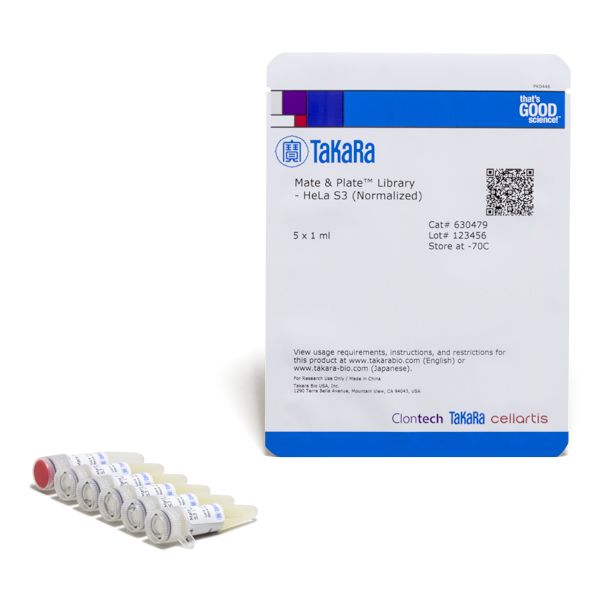Mate & Plate Library - HeLa S3 (Normalized)
Mate & Plate Library - HeLa S3 (Normalized)
This yeast two-hybrid library was constructed from HeLa S3 cDNA that had been previously normalized to preferentially remove abundant cDNAs derived from high-copy-number mRNAs. The normalization process incorporates a Duplex-Specific Nuclease (DSN) treatment and SMART technology, and increases the representation of low-copy-number transcripts in the library. This reduces the number of clones that must be screened to identify positive interactions, and facilitates the identification and characterization of novel protein-protein interactions.
HeLa S3 cDNA library transformed into yeast strain Y187. The library can be readily mated to a MATaGAL4 reporter strain, such as AH109 or Y2HGold.
Overview
- By far the easiest way to screen a library for protein-protein interactions
- Screen fewer colonies, detect more interactions
- Universal libraries—broadest gene representation
- No more searching for needles in a haystack
Use of pretransformed libraries simplifies screening

Use of pretransformed libraries simplifies screening.
Reduction in abundance of highly expressed gene transcripts following cDNA normalization

Reduction in abundance of highly expressed gene transcripts following cDNA normalization. cDNA normalization reduces the abundance of highly expressed gene transcripts. Data are shown for genes from mixed tissues, before and after normalization, which exhibit greater than 10,000 Mean Fluorescence Units (MFU), representing over 7,000 genes. Approximately 3,300 genes show a significant reduction in intensity, and thus abundance, following normalization. Due to the large volume of data obtained, the median MFU was plotted for groups of 100 genes before and after normalization.
DSN-Normalization reduces the amount of highly abundant transcripts

DSN-Normalization reduces the amount of highly abundant transcripts. Normalized (Lanes N) and non-normalized (Lanes C) Human Universal cDNA samples (PCR products) were electrophoresed on a 1.5% agarose gel and transferred to Hybond-N membrane. PCR-amplified probes of GAPDH and beta-actin were labeled with 32P-dATP and hybridized to the membrane.
Shagin, D. A. et al. A novel method for SNP detection using a new duplex-specific nuclease from crab hepatopancreas. Genome Res. 12, 1935–1942 (2002).
Zhulidov, P. A. et al. Simple cDNA normalization using kamchatka crab duplex-specific nuclease. Nucleic Acids Res. 32, e37 (2004).


